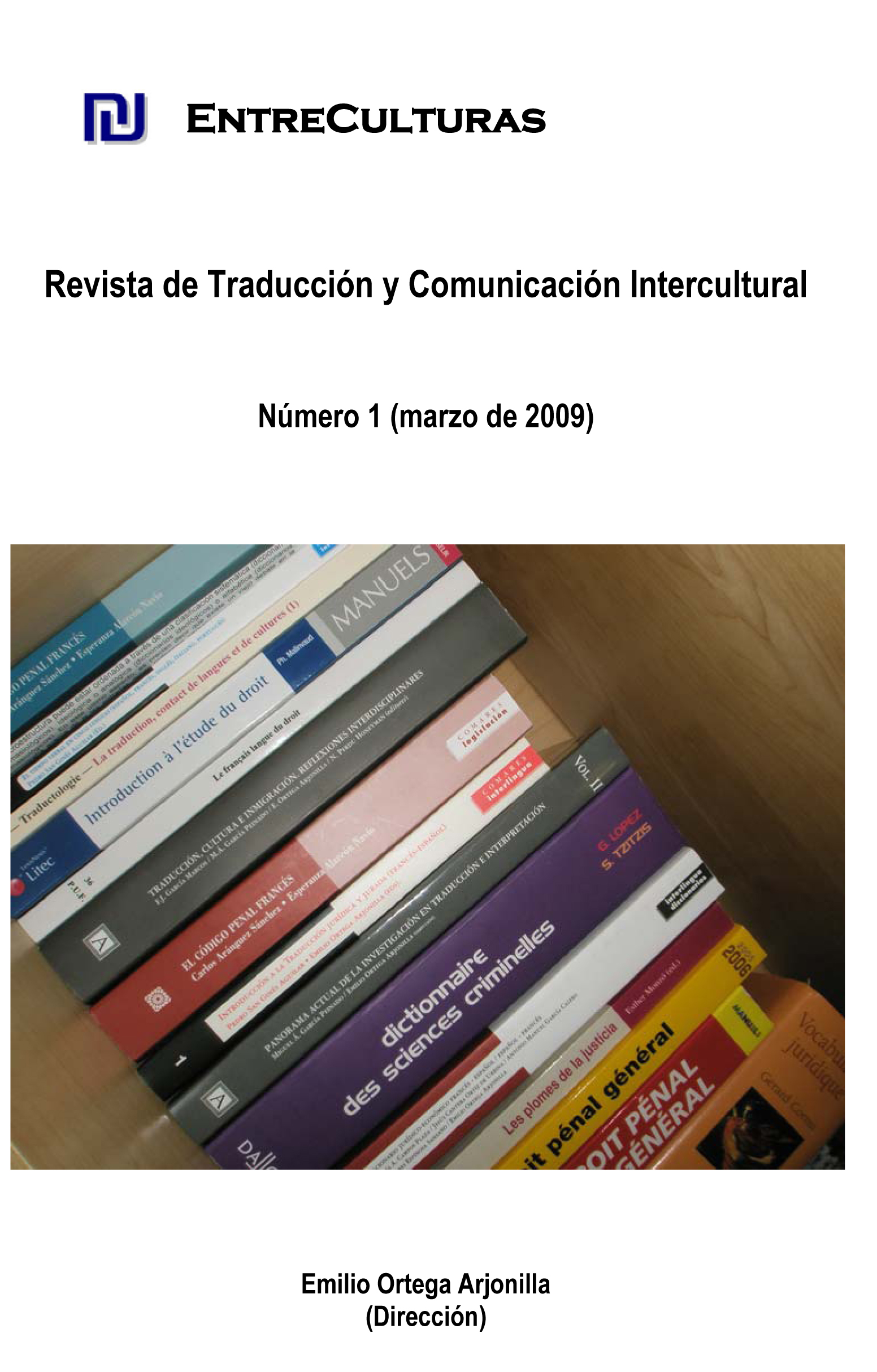PELHAM DE BULWER-LYTTON Y LA ESTÉTICA DEL DANDY EN LAS ‘SILVER FORK NOVELS’ (PELHAM BY BULWER-LYTTON AND THE AESTHETIC OF THE “DANDY” IN THE ‘SILVER FORK NOVELS’)
DOI:
https://doi.org/10.24310/Entreculturasertci.vi1.11821Palabras clave:
época victoriana, novela silver forkResumen
Trabajo que se ocupa del análisis de un subgénero narrativo de moda en la Inglaterra victoriana entre 1826 y 1840: la novela «silver-fork». Se trata de relatos que describen la elegancia y el brillo de la época anterior de forma imaginativa, anticipando el género de la novela romántica, y enfatizan y diseccionan la estética que caracterizaba a la alta sociedad aristocrática, en lugar de incidir en la moral. Su influencia se mantendrá en las novelas de mitad de la época victoriana, a través de la década de los 40, llegando a los años 50 y 60, cuando los novelistas comienzan a escribir obras «anti-silver-fork» denunciando el esnobismo del enfoque. El término «silver-fork», utilizado en tono de mofa, fue acuñado por William Hazlitt en 1827, en un artículo publicado en The Dandy School.
Descargas
Métricas
Citas
ADBURGHAM, ALISON (1983): Silver Fork Society: Fashionable Life and Literature from 1814 to 1840. Londres, Constable.
BARBEY D’AUREVILLY (1997): Du dandysme et de George Brummell, préface de Frédéric Schiffter. París, Éditions Payot & Rivages.
BULWER-LYTTON, SIR EDWARD GEORGE D. (1892): Pelham; or, Adventures of a Gentleman. The Works, 25, New York, P. F. Collier and Son.
CAMPBELL, JAMES L. SR. (1986): Edward Bulwer-Lytton. Boston, Twayne's Studies in Short Fiction Series.
CHRISTENSEN, ALLAN CONRAD (1976): Edward Bulwer-Lytton: The Fiction of New Regions. Athens (Georgia), The University of Georgia Press.
— (ed.) (2004): The Subverting Vision of Bulwer Lytton: Bicentenary Reflections. Newark, University of Delaware Press.
DAHL, CURTIS (1978): “Bulwer-Lytton” en H. Ford, George (ed.): Victorian Fiction: A Second Guide to Research. Nueva York, Modern Language Association, 28-33.
DALZIEL, MARGARET (diciembre 1963): “The Newgate Novel, 1830-1847 by Keith Hollingsworth (Book Review)”. Victorian Studies, 7 (2), 215-216.
ESCOTT, T. H. S. (1910): Edward Bulwer, First Baron Lytton of Knebworth; a Social, Personal, and Political Monograph. Londres, George Routledge & Sons.
GROSVENOR MYER, VALERIE (1988): “Bulwer-Lytton, Edward George Earle Lytton, First Lord Lytton (1803-1873)” en Mitchell, Sally (ed.): Victorian Britain An Encyclopedia. Nueva York, Garland, 103.
HARVEY, SIR PAUL (1983): The Oxford Companion to English Literature. 4th edition revised by Dorothy Eagle. Oxford University Press.
HAZLITT, WILLIAM (1930-1934): The Complete Works of William Hazlitt. Londres, Dent (21 vols., ed. P. P. Howe).
HUGHUES, WINIFRED (1992): “Silver Fork Writers and Readers: Social Contexts of a Best Seller”. Novel, 25, 328-347.
LANE, CHRISTOPHER (verano 2002): “Bulwer's Misanthropes and the Limits of Victorian Sympathy”. Victorian Studies, 597-625.
MITCHELL, LESLIE G. (2003): Bulwer Lytton: The Rise and Fall of a Victorian Man of Letters. Londres/Nueva York, Hambledon and London.
MOERS, ELLEN (1960): The Dandy: Brummell to Beerbohm. Londres, Secker and Warburg.
MULVEY-ROBERTS, MARIE (2001): “Edward Bulwer-Lytton” en Gothic Writers: A Critical and Bibliographical Guide. Westport, CT, Greenwood Publishing Group, 83-89.
— (2001): “Fame, Notoriety and Madness: Edward Bulwer-Lytton Paying the Price of Greatness”. Critical Survey, 13 (2), 115-134.
OAKLEY, J. W. (1 junio 1992): “The Reform of Honor in Bulwer's Pelham”. Nineteenth-Century Literature, 47.
POE, EDGAR ALLAN (julio 1835): “Notice of Bulwer's The Student”. American and Daily Advertiser, Baltimore.
— (febrero 1836): “Review of Rienzi”. Southern Literary Messenger, 198-201.
— (abril 1841): “Review of Night and Morning”. Graham's Magazine, 197-202.
— (noviembre 1841): “Review of The Critical and Miscellaneous Writings of Sir Edward Bulwer Lytton”. Graham's Magazine.
POLLIN, BURTON R. (septiembre 1965): “Bulwer-Lytton and 'The Tell-Tale Heart'”. American Notes and Queries, 7-8.
? (diciembre 1996): “Bulwer's Rienzi as Multiple Source for Poe”. Poe Studies, 29.2, pp 66-68.
? (primavera 2000): “Bulwer-Lytton's Influence of Poe's Work, Especially for an Author’s ‘Preconceived Design’”. Poe Studies Association Newsletter XXVIII, 1, 1-3.
POSTON, LAWRENCE (VERANO 1998): “Beyond the Occult: The Godwinian Nexus of Bulwer’s Zanoni”. Studies in Romanticism, 131-161.
SPIES, GEORGE H. (1976): “Edgar Allan Poe's Changing Critical Evaluation of the Novels of Edward Bulwer-Lytton”. Kyushu American Literature, 17, 1-6.
WORTHNIGTON, HEATHER (2004): “Against the Law: Bulwer's Fictions of Crime” en The Subverting Vision of Bulwer-Lytton. Newark, University of Delaware Press, 54-67.
Descargas
Publicado
Cómo citar
Número
Sección
Licencia
Todos los contenidos publicados en Entreculturas. Revista de traducción y comunicación intercultural están sujetos a la licencia Creative Commons Reconocimento-NoComercia-Compartirigual 4.0 cuyo texto completo puede consultar en <http://creativecommons.org/licenses/by-nc-sa/4.0>
- Se pueden copiar, usar, difundir, transmitir y exponer públicamente, siempre que:
- Se cite la autoría y la fuente original de su publicación (revista, editorial y URL de la obra).
- No se usen para fines comerciales.
- Se mencione la existencia y especificaciones de esta licencia de uso.
Los derechos de autor son de dos clases: morales y patrimoniales. Los derechos morales son prerrogativas perpetuas, irrenunciables, intransferibles, inalienables, inembargables e imprescriptibles. De acuerdo con la legislación de derechos de autor, Entreculturas. Revista de traducción y comunicación intercultural reconoce y respeta el derecho moral de los autores/as, así como la titularidad del derecho patrimonial, el cual será cedido a la Universidad de Málaga para su difusión en acceso abierto. Los derechos patrimoniales, se refieren a los beneficios que se obtienen por el uso o divulgación de las obras. Entreculturas. Revista de traducción y comunicación se publica en open access y queda autorizada en exclusiva para realizar u autorizar por cualquier medio el uso, distribución, divulgación, reproducción, adaptación, traducción o transformación de la obra.
Es responsabilidad de los autores/as obtener los permisos necesarios de las imágenes que están sujetas a derechos de autor.





7.png)
